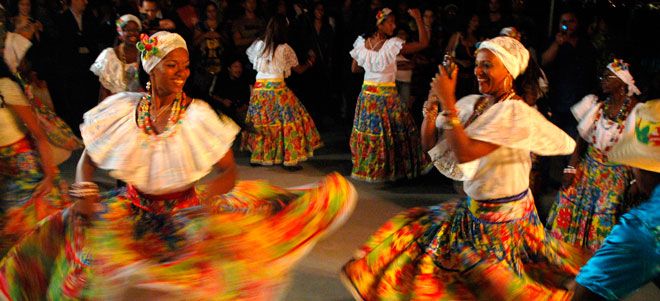Candomblé: Dance of the Orixás in Modern Day Bahia, Brazil

It was a summer Sunday evening in the Federaco hillside neighborhood of Salvador, Bahia where warm sea breezes gently enveloped us as we journeyed into a large open-aired whitewashed stucco temple (terreiro), to attend a traditional Afro-Brazilian Candomble ceremony.
Within moments of arriving we got the distinct impression that we were in for an exciting, enriching and otherworldly experience. Incense filled the air, large golden ornaments hung from the ceiling and ornate murals covered the walls. In one corner was an elaborate altar laden with brilliantly colored artifacts, figurines, candles and vases of flowers and in the other corner, a spirited cadre of male drummers, beating out innovative and infectious rhythms.
Threading our way through the crowd of fifty or so neighborhood folk, initiates and tourists, we found seats on the bleacher-like benches nestled along the back wall.
Emerging slowly from a doorway on the opposite side of the large ceremonial hall, one by one, a line of 23 women sinuously sauntered into the center of the room. Clad in immaculate white garb they quietly chanted and danced in unison until they made a large circle in the middle of the floor.
Their floor-length cotton skirts covered many layers of elaborate petticoats, their puff-sleeved blouses were covered by sashes that bound their chest, their heads were wrapped in a variety of intricate turban styles and each wore a wide array of brightly colored glass bead necklaces.
In concert with the drumbeats, their undulating movements and African chants steadily increased in pace during the hour-long preparatory period wherein the priestesses were calling to the orixas, ancestral African spirits, inviting them down into the sacred space.